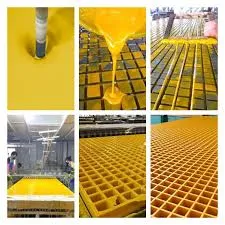
-
 Afrikaans
Afrikaans -
 Albanian
Albanian -
 Amharic
Amharic -
 Arabic
Arabic -
 Armenian
Armenian -
 Azerbaijani
Azerbaijani -
 Basque
Basque -
 Belarusian
Belarusian -
 Bengali
Bengali -
 Bosnian
Bosnian -
 Bulgarian
Bulgarian -
 Catalan
Catalan -
 Cebuano
Cebuano -
 China
China -
 China (Taiwan)
China (Taiwan) -
 Corsican
Corsican -
 Croatian
Croatian -
 Czech
Czech -
 Danish
Danish -
 Dutch
Dutch -
 English
English -
 Esperanto
Esperanto -
 Estonian
Estonian -
 Finnish
Finnish -
 French
French -
 Frisian
Frisian -
 Galician
Galician -
 Georgian
Georgian -
 German
German -
 Greek
Greek -
 Gujarati
Gujarati -
 Haitian Creole
Haitian Creole -
 hausa
hausa -
 hawaiian
hawaiian -
 Hebrew
Hebrew -
 Hindi
Hindi -
 Miao
Miao -
 Hungarian
Hungarian -
 Icelandic
Icelandic -
 igbo
igbo -
 Indonesian
Indonesian -
 irish
irish -
 Italian
Italian -
 Japanese
Japanese -
 Javanese
Javanese -
 Kannada
Kannada -
 kazakh
kazakh -
 Khmer
Khmer -
 Rwandese
Rwandese -
 Korean
Korean -
 Kurdish
Kurdish -
 Kyrgyz
Kyrgyz -
 Lao
Lao -
 Latin
Latin -
 Latvian
Latvian -
 Lithuanian
Lithuanian -
 Luxembourgish
Luxembourgish -
 Macedonian
Macedonian -
 Malgashi
Malgashi -
 Malay
Malay -
 Malayalam
Malayalam -
 Maltese
Maltese -
 Maori
Maori -
 Marathi
Marathi -
 Mongolian
Mongolian -
 Myanmar
Myanmar -
 Nepali
Nepali -
 Norwegian
Norwegian -
 Norwegian
Norwegian -
 Occitan
Occitan -
 Pashto
Pashto -
 Persian
Persian -
 Polish
Polish -
 Portuguese
Portuguese -
 Punjabi
Punjabi -
 Romanian
Romanian -
 Russian
Russian -
 Samoan
Samoan -
 Scottish Gaelic
Scottish Gaelic -
 Serbian
Serbian -
 Sesotho
Sesotho -
 Shona
Shona -
 Sindhi
Sindhi -
 Sinhala
Sinhala -
 Slovak
Slovak -
 Slovenian
Slovenian -
 Somali
Somali -
 Spanish
Spanish -
 Sundanese
Sundanese -
 Swahili
Swahili -
 Swedish
Swedish -
 Tagalog
Tagalog -
 Tajik
Tajik -
 Tamil
Tamil -
 Tatar
Tatar -
 Telugu
Telugu -
 Thai
Thai -
 Turkish
Turkish -
 Turkmen
Turkmen -
 Ukrainian
Ukrainian -
 Urdu
Urdu -
 Uighur
Uighur -
 Uzbek
Uzbek -
 Vietnamese
Vietnamese -
 Welsh
Welsh -
 Bantu
Bantu -
 Yiddish
Yiddish -
 Yoruba
Yoruba -
 Zulu
Zulu
Exploring the Characteristics and Applications of GRP Grating Systems in Industrial Settings
Understanding GRP Grating A Comprehensive Overview
GRP (Glass Reinforced Polymer) grating has emerged as a superior alternative to traditional materials in various industrial applications. This innovative product is made by embedding glass fibers within a polymer matrix, resulting in a lightweight yet extremely strong material. Its unique properties make GRP grating an increasingly popular choice across industries, including construction, wastewater treatment, and chemical processing.
Composition and Manufacturing Process
GRP grating is composed of a combination of resins and glass fibers, which are processed into a grid-like structure. The manufacturing process typically involves pultrusion, where continuous strands of glass are pulled through a resin bath and then cured to form a solid structure. This results in a product that is not only durable but also resistant to corrosion, UV light, and harsh chemicals. The incorporation of glass fibers enhances the tensile strength, ensuring that GRP grating can withstand heavy loads and resist deformation over long periods.
Key Advantages
One of the primary benefits of GRP grating is its lightweight nature. Compared to steel or aluminum grating, GRP is significantly lighter, making it easier to transport and install. This feature can lead to reduced labor costs and faster installation times. Additionally, GRP grating is non-conductive, making it an excellent choice for environments where electrical hazards are a concern.
Another critical advantage is the material's resistance to corrosion. Traditional grating materials like steel can rust over time, especially in environments exposed to water and chemicals. In contrast, GRP grating maintains its integrity in corrosive environments, extending its lifespan and reducing maintenance costs. This durability makes it particularly suitable for use in sewage treatment plants, chemical plants, and offshore applications.
Moreover, GRP grating is designed to be slip-resistant, providing a safe walking surface in wet or oily conditions. This is achieved through the addition of textured surfaces, which enhance grip and reduce the risk of accidents. The safety aspect is crucial, particularly in industrial settings where poor footing can lead to serious injuries.
grp grating

Applications of GRP Grating
The versatility of GRP grating allows it to be used in various applications. In the construction industry, it is commonly utilized for walkways, platforms, and stair treads. Its lightweight and strong nature simplifies the design and construction process, allowing for more efficient project completion.
In the wastewater treatment industry, GRP grating is favored for its resistance to corrosive substances. It is often used in clarifiers, aeration tanks, and sludge handling systems. The material's low maintenance requirements also make it an economical choice over the long term.
Furthermore, GRP grating is widely employed in the chemical processing sector. It can safely support personnel and equipment in areas where exposure to harsh chemicals is inevitable. The non-conductive properties of GRP grating provide additional safety in environments where electrical hazards exist, such as in power plants or manufacturing facilities.
Environmental Considerations
In addition to its practical advantages, GRP grating also presents environmental benefits. The extended lifespan of the material reduces the need for replacements, leading to less waste. Moreover, many manufacturers are now focusing on creating sustainable products, using recyclable materials in their production processes. By opting for GRP grating, industries can minimize their environmental footprint while still achieving high-performance outcomes.
Conclusion
In summary, GRP grating offers an unparalleled combination of strength, durability, and safety, making it a preferred choice across numerous industries. Its lightweight and corrosion-resistant properties, along with its versatile applications, underline its growing popularity in modern engineering solutions. As industries continue to prioritize safety and sustainability, GRP grating stands out as a smart investment for the future, ensuring both performance and responsibility in industrial settings. As we move forward, understanding and incorporating materials like GRP grating will be essential in creating safer and more efficient working environments.









